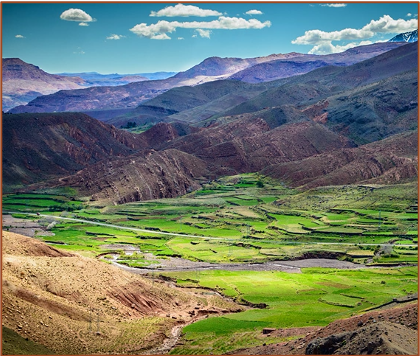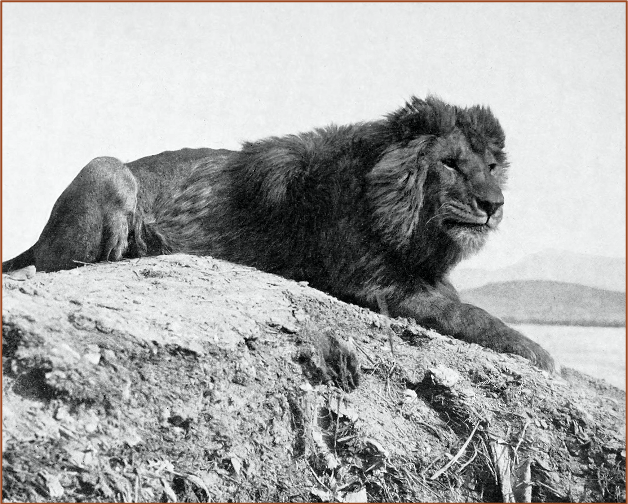Morocco’s undoubtable natural beauty, from the famous Atlas Mountains to the compellingly picturesque coastal scenes, hold within copious amounts of cultural and biodiversity – today, Morocco’s 40 different ecosystems provide habitats for an abundance of endemic species, including many flora and fauna rare elsewhere.

Milton Group’s Founder, Paul Milton, has a long history of working in Morocco’s incredible landscapes, yet, as Paul himself has observed, a major threat to this biodiversity, as across the globe, is mass population growth, urbanisation and the corresponding human wildlife conflict (HWC).
More than half of global population growth between now and 2050 is expected to occur in Africa, with the population of Morocco currently at 36.8 million people, 63.8% of those living in urban areas. Industrialisation has already put considerable pressure on Morocco’s delicately balanced environments, and hunting conflicts are at present a major focus of various conservation based projects in the country. The Rufford Foundation are currently working on a project to gauge and establish local hunter’s awareness levels regarding endangered species, to provide a valuable baseline from which to collaborate with them on avoiding negative impacts to these species through hunting activities.
Since 2017, the Atlas Golden Wolf Project has similarly looked towards HWC as an issue in Morocco, monitoring and studying human-carnivore conflict and developing conflict-mitigation strategies with shepherds in the Atlas Mountains. Liz Campbell, a WildCru specialist at the University of Oxford, has ongoing projects with local farmers in Morocco focused on developing community-based conflict migration strategies for crop-raising wildlife in the Middle Atlas. Currently, animal welfare legislation is limited in Morocco, with no specific body in charge of the realm.

The Atlas Mountain Lion or Barbary Lion, now regionally extinct in Morocco
Yet, the Moroccan government’s ‘Vision 2020’, which looks to derive $14.95bn from the tourism sector, holds sustainable development at the core of the initiative, and presents an opportunity for the country to leverage their position as an already popular tourism destination, and claim their spot as a world-class conservation based tourism platform, ready to expand the economy and strengthen the nation’s brand, whilst protecting and enhancing Morocco’s already evident natural and social capital assets.
Covid-19 will likely cause a 3-5 year compression in the international tourism market, a consideration for Morocco, as well as across the globe, but smart leaders of the new normal will set long-term visions that cater to our new way of life, through developments which prioritise the execution of safety, security and sustainability, and welcome the domestic market. With 87% of travellers looking to travel sustainably, as recorded in a booking.com survey, the market for experience and outcome-based expeditions continues.
In 2019, 13 million tourists visited Morocco, a 5.4% increase on 2018 – the overall Vision sets out to increase and double international visits, triple domestic trips, and expand Morocco’s hotel room capacity by 200,000. M Avenue, a Moroccan Vision 2020 $100m project in Marrakech has recently installed 2,700 sqm of gardens, landscapes, galleries, cultural centres, and more, in collaboration with top operating brands including a Four Seasons Private Residence and Cristiano Ronaldo’s new hospitality venture, Pestana CR7 Hotels. Marrakech is presently the most popular destination in Morocco, and with good access to the spectacular Atlas Mountains, the chance for eco-tourism alongside these new developments is clear.
This exciting desire for growth within the Moroccan tourism sector will bring in an array of opportunities, and needs to work in tandem with thoughtful management to ensure that the country’s already burdened biodiversity is not further overwhelmed and extinguished by mass tourism, as has been seen in places such as the Masai Mara. In Marrakech perhaps most notably, the success of attracting tourists has come with over run souks and an over dependence on the tourist dollar.
As stated in the Responsible Travel Report, albeit pre-covid, but still highly relevant today, five important world tourism issues for the future, and present, include:
- Maintaining a destination’s economic, social, cultural, natural and built resources
- Global concerns for safety and security
- Impact on tourism from global economic, social, cultural and political change
- Responding to long-term impacts of overt tourism, climate change and global warming
- The necessity for increased multi-level leadership in tourism policy and strategic planning
Similar to Milton Group’s approach to the future of sustainability and conservation, Vision 2020 looks to coordinate the actions of public and private stakeholders to approach and champion these issues, encouraging collaboration and ownership at all levels of the population.
Conservation-based tourism thus offers a viable delivery point for Morocco’s Vision 2020, not only as we see an increased interest in impact investing and engaged collaboration by the private sector, but by providing additional positive downstream impact for local stakeholders as well. High value-Low density tourism has proven to be the best model for the purposed of downstream community uplift – mass tourism does not provide the same economic benefits to the host country at either a long-term macro or micro level. Research conducted across 34 countries concluded that households located within the adjacencies of protected areas, with documented tourist visits, had 17% higher wealth levels and 16% lower likelihood of poverty than similar households far from protected areas. Of course, in parallel, it’s crucial these emerging benefits go beyond the superficial, and in turn, the unhelpful – a key metric of success in our own tourism-based economies is not only the created financial ‘wealth’ of surrounding and local communities, but the uplift opportunities facilitated through careful consideration of job development, health improvements, education and training, and more.
Morocco presents a landscape and culture which already holds a strong existing value proposition; close to Europe and the US, with the perception of stability, and the allure of the Middle East or Maghreb, but without the perceived risk of conflict. As one of the most accessible African countries, offering a hot climate that facilitates various cultural attractions and diverse terrains, and a varied range of environmental experiences such as mountain climbing and camel riding, it holds a plethora of opportunities to be leveraged to promote conservation through a tourism based model.
Nadine Manji, Analyst


 By miltongroup, September 16, 2020
By miltongroup, September 16, 2020